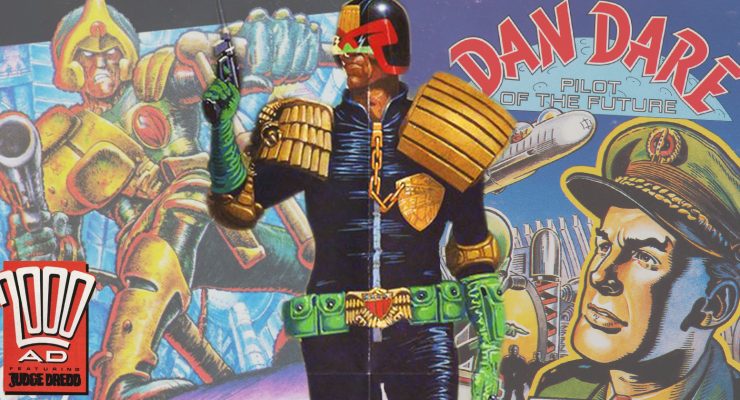Atomic Blonde, 2017.
Directed by David Leitch.
Starring Charlize Theron, James McAvoy, John Goodman, Til Schweiger, Eddie Marsan, Sofia Boutella, Bill Skarsgård, Sam Hargrave, James Faulkner, Roland Møller, and Toby Jones.
SYNOPSIS:
An undercover MI6 agent is sent to Berlin during the Cold War to investigate the murder of a fellow agent and recover a missing list of double agents.
Atomic Blonde kicks off in medias res with a battle-scarred Lorraine (a tough as nails MI6 agent played by Charlize Theron) fully submerging her slim body into a bathtub full of water and ice, where director David Leitch (one-half of the directing team behind the first John Wick and also the man helming the hotly anticipated Deadpool 2) closes in on various scars and bruises. Needless to say, it generates curiosity as to how the mission blew up so violent, but the results are mixed, mostly due to an unfortunate narrative that struggles to find emotional weight or dramatic urgency.
Based on the spy thriller graphic novel The Coldest City, Atomic Blonde functions as a dizzying tale set on the verge of the destruction of the Berlin wall, where a list exists that, if fallen into the wrong hands, could potentially extend the length of the Cold War. What follows is a whole lot of shady personalities double-crossing one another (naturally, it’s usually Lorraine getting used), which would mean something and generate tension if the characters were drawn with a little more detail than “evil German billionaire” and “easy to spot bad guy on the good team of special operatives”. James McAvoy (fresh off his arguably career-best performance in Split) is also here as a womanizing partner of sorts, although his character, despite energetic life and debauchery, essentially and disappointingly boils down to posing the question of if he will remain heroic or switch to the role of villain.
There’s a lot of sneaking and spying on each other going on, and let’s just say it eventually becomes exhausting. It doesn’t help that the movie constantly further ruins its own flow by frequently cutting back to the present so Lorraine can discuss with her superiors (played by Toby Jones and John Goodman) her mysterious actions and where the operation truly became FUBAR. Atomic Blonde has traces of that imaginative world building that elevated John Wick into more than “the action flick where Keanu Reeves goes on a vengeful killing spree in the name of his murdered dog” (there’s a figure known as The Watchmaker), but for the most part the story just drags itself through the mud until the next exciting fight sequence impresses audiences.
Fortunately, Atomic Blonde largely succeeds on that front, thanks to the combination of Charlize Theron’s collectively calm yet badass performance (whether she’s lighting up another cigarette or glaring a steely gaze, there is the sensation that she is in total control of every situation). It’s not just about physical posturing though, as Theron has put in the necessary training work to pull off these elaborate and lengthy choreographed hand-to-hand combat fights with painful impact on the receiving end of every punch, kick, and takedown. Some of them are completely unbroken sequences, including one highly impressive example that goes on for minutes inside an office building to the point where both combatants become extremely bloodied, and with still no cinematic cuts, the carnage takes itself to a Berlin car chase. It’s the undeniable highlight of the movie and further proof that David Leitch is sharply skilled at framing and filming memorable moments of stylistic action.
To give you an idea of just how much Charlize Theron owns this role and further solidifies her acting position of female action star, the fighting eventually becomes so brutal that as Lorraine works her way back to her feet mid-battle, the sight of a woman this graphically beaten and torn wasn’t horrifying. It was maybe a little bit shocking, but the reaction of most will lean toward praising the film for not shying away from dirtying up its blonde bombshell so the fighting can prove her toughness; we genuinely feel that she can dish out the same punishment she soaks up. Again, the ferocity behind every movement is visceral; you may not care about the enemies in the battle, but the bone-crunching close-quarters mayhem is still damn entertaining.
Aside from utilizing the standard grayish washed out color palette commonly found in Cold War era films, Atomic Blonde also takes advantages of certain environments to insert more vibrancy. There is a whole noir presentation going on (complete with multiple character monologues) with aesthetically pleasing neon lighting that contrasts well with the dullness of the outside world. David Leitch manages to compose both gritty violence and sensual sexuality (don’t get too excited, however, as the advertised lesbian sex scene between Theron and Sofia Boutella is fairly tame and quickly over) without the experience ever feeling trashy or getting gratuitous. The licensed soundtrack full of notable 1980s popular electronic/dance songs also needs to be mentioned, as does a generic thug repeatedly being whacked to death with a skateboard set to 99 Luftballoons
There’s no denying that Atomic Blonde successfully captures a time period with both authentic touches and its own twist on the material, but the story is tiring and in desperate need of fewer villains. Even the romance between Lorraine and the aforementioned French operative Delphine (Sofia Boutella) is underdeveloped and could have greatly benefited the overall film with more focus on them. At least the action is another win for director David Leitch; you won’t believe how many ways Charlize Theron can kill someone with a rope.
Flickering Myth Rating – Film: ★ ★ ★ / Movie: ★ ★ ★
Robert Kojder – Chief Film Critic of Flickering Myth. Check here for new reviews weekly, friend me on Facebook, follow my Twitter or Letterboxd, or email me at MetalGearSolid719@gmail.com









